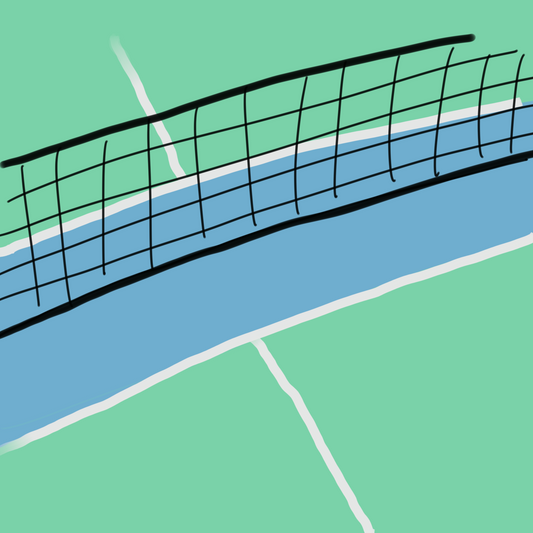Rally scoring is easier to learn and is a faster game, making it perfect for players of all skill levels. Whether you’re a beginner who wants to focus on playing instead of keeping track of server 1 and server 2, or a seasoned pro looking for a high-stakes match, rally scoring offers something for everyone.
What Is Rally Scoring?
In this format, a point is scored on every rally, regardless of which team serves, with one exception: your team must be serving to win the game-winning point. The score is called with two numbers, but don’t let its simplicity fool you—rally scoring brings its twists to the court.
How Rally Scoring Works in Doubles
-
Player Positioning at the Start of a Game:
- Each partner decides which side of the court to start on.
- After hitting the serve (serving team) or striking the return (receiving team), players can switch court sides, but they must return to their original side of the court at the start of the next rally.
-
Scoring a Point:
- At the end of a rally, the team that wins the rally scores a point.
-
Serve Rotation:
- The team that won the last rally serves next.
- If the score is EVEN, the teammate on the right side serves, and if the score is ODD, the teammate on the left side serves. Teammates DO NOT rotate serving positions. The ball is served based on the score being even or odd.
-
Calling the Score:
-
The server announces the score in a two-digit format:
- Serving team’s score
- Receiving team’s score
- Example: A score of 8-5 means the serving team has 8 points, and the receiving team has 5 points.
-
The server announces the score in a two-digit format:
-
Winning the Game:
- Games are typically played to 15 or 21 points, with the winning team needing to secure a 2-point lead.
- To win the game-winning point, you must be the serving team.
How Rally Scoring Works in Singles
-
Player Positioning at the Start of a Game
- Each player starts on the right side of the court.
-
Scoring a Point:
- At the end of a rally, the player that wins the rally scores a point.
-
Serve Rotation:
- The player that won the last rally serves for the next point.
- If the score is EVEN, the player serves from the right side of the court, and if the score is ODD, the player serves from the left side of the court.
-
Calling the Score:
-
The server announces the score in a two-digit format:
- Serving player's score
- Receiving player’s score
- Example: A score of 7-4 means the serving player has 7 points, and the receiving player has 4 points.
-
The server announces the score in a two-digit format:
-
Winning the Game:
- Games are typically played to 15 or 21 points, with the winning player needing to secure a 2-point lead.
- To win the game-winning point, you must be the server.
The Freeze
What is a "freeze" in pickleball rally scoring? It's when you or your doubles team must score the game-wining point while serving. For example, when a game is being played to 21 and a team reaches 20 points, they can only score the game-winning point if they serve.
If a team has 20 points and is receiving and wins the rally, they do not add points to their score- they freeze their score at 20 and must serve to win the final point.
Curious about the original format? Learn more about Traditional Scoring.
Call-to-Action
While rally scoring is easier to learn, it also amps up the intensity since every rally counts. This format can make mistakes add up fast, which can encourage strategic restraint. What type of Rally Scoring player are you? Will you play your strengths or thrive under pressure? Share in the comments below- we want to hear from you!
Keep the Pickleball Fun Rolling 🎉
Take your pickleball passion off the court with card games! Check out our Pickleball Slam card game—the perfect way to test your trick-taking strategy with friends and family! Want a fun standard deck of cards for all your classic card games, such as poker, rummy, and more? Check out Pickleball Playing Cards - loaded with slang, shots, & playing tips. Shop now at pballgoods.com or find them on Amazon (Pickleball Slam and Pickleball Playing Cards), and bring the rally to your next game night!




